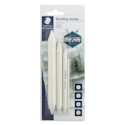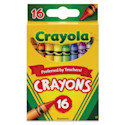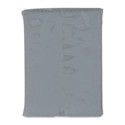Description
The By Annie Mask Filter Material provides 5 yards of 20-inch-wide, lightweight non-woven interfacing that offers excellent versatility for educational projects and practical sewing applications. This breathable material maintains its filtering properties while remaining comfortable and easy to work with, making it suitable for students of various skill levels.
The generous yardage provides enough material for multiple projects and experiments, offering good value for families who want to explore different applications. The 20-inch width accommodates most standard sewing projects without requiring piecing, and the lightweight nature makes it manageable for young sewers to handle independently.
How Homeschoolers Can Use This Product
Life Skills and Practical Education
This material serves as an excellent introduction to understanding different fabric types and their properties. Students can learn about non-woven versus woven textiles, exploring how different manufacturing processes create materials with specific characteristics. The hands-on experience of working with interfacing helps students understand textile construction and prepares them for more advanced sewing projects.
Sewing with filter material teaches practical skills that extend beyond crafting. Students learn to measure accurately, cut straight lines, and understand how different materials behave during construction. These skills build confidence and independence while creating useful items for the household.
Science Learning Opportunities
Filtration Experiments: Use small pieces to demonstrate filtration principles in science lessons. Students can test how the material filters different substances, compare its effectiveness to other materials, and learn about particle size and filtration mechanisms. This connects to lessons about water purification, air quality, and environmental science.
Material Science Studies: Examine the material under magnification to observe its structure, test its durability under different conditions, and compare its properties to other textiles. Students can create charts documenting breathability, strength, and other measurable characteristics.
Physics Applications: Explore concepts like air pressure, resistance, and flow dynamics by conducting experiments with the material. Students can measure how airflow changes with different layers or configurations, connecting abstract physics concepts to tangible results.
Creative and Practical Projects
Beyond protective applications, this material works well for various craft projects that teach valuable skills. Students can create sachets for potpourri or herbs, practice different sewing techniques, or use it as a base layer in quilting projects. The material’s stability makes it forgiving for beginning sewers while still producing professional-looking results.
The neutral white color accepts fabric dyes well, allowing students to experiment with color theory and dyeing techniques while learning about how different materials absorb pigments.
Cross-Curricular Integration
Mathematics: Calculate material requirements for projects, practice measurement conversions, and work with geometric shapes when cutting patterns. Students can learn about area, perimeter, and efficient material usage while completing practical projects.
History and Cultural Studies: Research how different cultures have used filtration materials throughout history, from ancient air purification methods to modern textile innovations. Students can explore how technological advances have changed material properties and manufacturing processes.
Practical Learning Tips
Start with simple projects that require straight cuts and basic stitching before advancing to more complex construction. Keep sharp fabric scissors dedicated to cutting this material, as dull blades can create ragged edges that affect the material’s performance.
When teaching sewing techniques, emphasize proper seam allowances and finishing methods. The material’s edges won’t fray like woven fabrics, making it ideal for practicing clean construction techniques without worry about edge finishing.
Building Independence and Confidence
Working with this material allows students to create practical items while developing problem-solving skills. When projects don’t turn out as expected, students learn to troubleshoot and adapt, building resilience and creative thinking skills that serve them well in all areas of learning.
The substantial yardage means students can experiment freely without fear of wasting expensive materials, encouraging the trial-and-error learning that builds genuine understanding and skill development.





Reviews
There are no reviews yet.